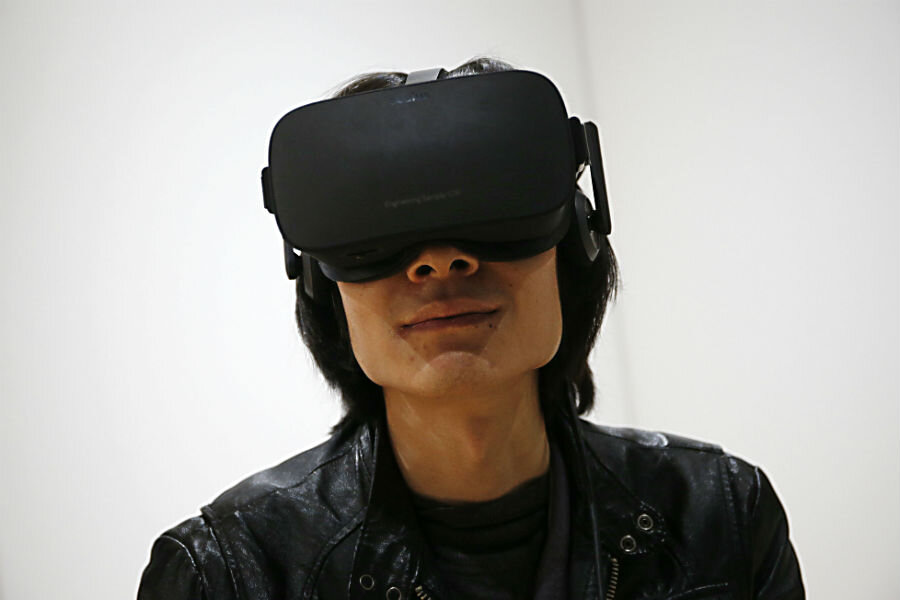Oculus Rift launch: Will virtual reality transform our lives?
As Oculus Rift – the Mark Zuckerberg-backed virtual reality headset – launches Monday, questions arise as to exactly what role virtual reality will play in our future.
The development of virtual reality systems has long been most commonly associated with the video game industry. When acquired by Facebook in March of 2014, Oculus published a statement on their Kickstarter page announcing the partnership and promising their supporters that it “ensures that the Oculus platform is coming, and that it’s going to change gaming forever.”
However, Mr. Zuckerberg and the team at Oculus found they also had a shared vision for virtual reality that extended far beyond the gaming sphere. They imagined an entirely new platform for human connection and interaction.
Marketing hype? Perhaps.
"There's so much hype and money being thrown into this thing," Yoshio Osaki, president at market researcher IDG, told CNet. He says that VR will take two to four years to develop, but warned there's a 30 percent chance it will fail.
Zuckerberg says that humanity is constantly moving forward towards richer means of interaction. In a February interview with the German newspaper, Die Welt am Sonntag, Zuckerberg discusses how 10 years ago the majority of content shared through the Internet was based on text, now it is becoming more photo-oriented, and he believes in the future we will see more and more video communication.
He further states that, “in the future, I think you are going to want to capture a whole scene, a room, to be able to transport to that. To be able to stream what you are doing live and have people be able to interact in that space.”
He says that virtual reality hardware and software will provide the system for accessing such simulated interactive environments. Communication does appear headed in that direction.
Last year, The New York Times introduced their own virtual reality app, which users could download and access without a special headset. The app, which gave users access to 360-degree panoramic views of various locals, was downloaded by more people than any other app in the history of The New York Times, CNET reported. The Wall Street Journal added 360-degree videos to its flagship app in November.
Education and healthcare are other industries looking to expand their use of virtual reality. Expensive surgery simulators exist already for physician training and the goal is that with the expanded development of healthcare virtual reality platforms, costs will decrease, allowing access to a greater number of professionals.
Even home improvement is beginning to use similar technology to help consumers visualize their project prior to installation. Recently Microsoft partnered with Lowe’s to launch their HoloLens headset. The headset, which utilizes augmented reality to overlay virtual objects on a physical space, is rolling out now in Lowe’s stores as part of a design showroom to help customers envision the outcome of a potential home renovation.
Meanwhile, the Oculus Rift is the first high-end consumer VR system to come to market – but not the last. Several more are expected to debut in 2016. And WIRED reviewer Peter Rubin was impressed by the new Oculus headset:
This is an astonishingly well-made device. It delivers rock-solid, comfortable VR, and it does so easily. You’ll be able to put this thing on anyone and show them the magic. You’ll have friends coming over just to go through the Dreamdeck. (Seriously, you will.) But you’ll have to make your peace with the idea that your $600—or realistically, $1,500 or more, if you need a PC to go with it—is an investment. It’s an investment in the things you’ll be able to do in the Rift, the places you’ll be able to go.





